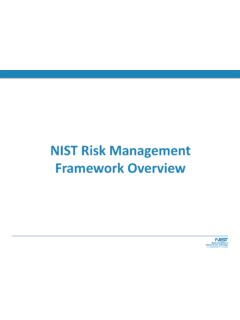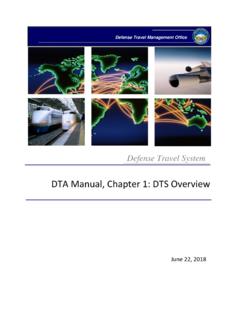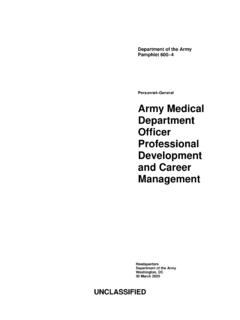Transcription of 1.8. Flow Charts for Emergency Management
1 WHO/EHA/EHTP Draft 1-1999 WHO/EHA Emergency HEALTH TRAINING PROGRAMME FOR AFRICA 1. overview Flow Charts for Emergency Management Panafrican Emergency Training Centre, Addis Ababa, July 1998 WHO/EHA/EHTP Draft 1-1999 Flow Charts for Emergency Management Overhead Transparencies Disasters and Health, General Flow chart Earthquake and Disaster Response, Flow chart Drought and Health Response.
2 Flow chart Floods and Health, Flow chart Landslide and Health, Flow chart Volcanic Eruption and Health Response, Flow chart Epidemic Emergencies, Flow chart Fires and Health, Flow chart Food and Emergencies, Flow chart Violence and Public Health, Flow chart Displacement and Health, Flow chart Refugee and Internally Displaced Populations, flows , Occasions and Priorities for Assistance Essentials for Contingency and Preparedness Planning for the Health Sector, Summary , Essentials for Contingency and Preparedness Planning for the Health Sector, Hand out WHO/EHA/EHTP Draft 1-1999 Flow Charts for Emergency Management Trainers' Guide Objectives: To show that Epidemiology is relevant to Emergency Management ; to clarify causal chain in disasters; to highlight elements of health preparedness and response.
3 (Knowledge/Attitudes) Key-message: One can plan for Emergency Management , on the basis of good sense. Disasters and Health, General Flow chart Introduce. This is a frame, which can be filled for any disaster. The result is a plan for health response activities. Each Emergency has specific implications for the health sector, direct and indirect. Direct impact of floods is drowning and trauma. Indirect impact can be a diarrhoea outbreak due to pollution of water sources. Associated factors will be the displacement of population and the destruction of infrastructures that will hamper the delivery of health care. Health Response must consider all these different issues. Earthquake and Disaster Response, Flow chart (Present and discuss).
4 Drought and Health Response, Flow chart (Present and discuss). Floods and Health, Flow chart (Present and discuss). Landslide and Health, Flow chart (Present and discuss). Volcanic Eruption and Health Response, Flow chart (Present and discuss). Epidemic Emergencies, Flow chart (Present and discuss). Fires and Health, Flow chart (Present and discuss). Food and Emergencies, Flow chart (Present and discuss). Violence and Public Health, Flow chart (Present and discuss). Displacement and Health, Flow chart (Present and discuss). Refugee and Internally Displaced Populations, flows , Occasions and Priorities for Assistance Present and discuss. Population displacement caused by whatever hazard.
5 All the phases are present. The response activities are shown in the boxes with round edges. Health care can be delivered in different measure and in different ways at all stages. Essentials for Contingency and Preparedness Planning for the Health Sector, Summary Explain. The summary can be shown in transparency, while the two- page table is distributed as handout. Underline the difference between the Primary Hazard , the Transport Incident, and the Primary Cause of Death or Illness , the Trauma. Clarify WHO/EHA/EHTP Draft 1-1999 that the first responsibility of the Health Sector is to address the Primary Causes of Death or Illness.
6 The capacities needed can be Technical, human resources and training, and Institutional, equipment, supplies, legislation, clear procedures, etc. , Essentials for Contingency and Preparedness Planning for the Health Sector, Hand-out A two- page table, to be distributed as handout. Complementary to The health sector in Emergency Management ( ). Essential Reading: EPR Handbook for Africa, WHO/PTC, 1992 African Disaster Handbook, WHO/PTC, 1990 The Public Health Consequences of Disasters, E. K. Noji, Oxford University Press, 1997 WHO/EHA/EHTP Draft 1-1999 Disasters and Health.
7 General Flow chart Disasters and Health HEALTH RESPONSE DIRECT IMPACT INDIRECT IMPACT VULNERA-BILITY ASSOCIATED FACTORS HAZARD DISASTER WHO/EHA/EHTP Draft 1-1999 Earthquake and Disaster Response, Flow chart SPECIAL BUDGET HEALTH RESPONSE Search and Rescue Triage First Aid Medical evaluation Special Delivery Intensive Care personnel : professionals and volunteers education, training and drills Supplies and equipment Hospital preparedness plans and drills Hospital vulnerability assessment Protection and contingency plans Back-up systems: - Decentralized stand-by capacities - Generators, etc.
8 Electrocution LOSS OF HEALTH FACILITIES AND SERVICESLOSS OF OTHER LIFELINESA cute respiratory distress Acute and chronic intoxications Burns DrowningTRAUMA HypothermiAsphyxia Entrapment Transport incidentsFloodsFireToxic spills DustDamage to electric linesLandslides Collapse of structures Earth Quake WHO/EHA/EHTP Draft 1-1999 Drought and Health Response, Flow chart Drought and Health Response HEALTH RESPONSE Epid.
9 Surveillance Control Guidelines Training & supplies Staff Nut. Surveillance Guidelines for supplementation & Rehabilitation Training & supplies staff Programme strengthening EPI, MCH, ED, H. Information referral Special plans, policies & procedure Special budget Diarrhoea cholera Typhoid Fever Skin diseases Eye diseases, etcMalnutrition AvitaminosesWater Shortage Drought Crop Failure Loss of Livestock Reduced Food IntakeLoss of buying power Migration Less time and less access to Health Other Ilness WHO/EHA/EHTP Draft 1-1999 Floods and Health.
10 Flow chart Floods and Health CAPACITY FOR HEALTH RESPONSE Drowning Traumas Malaria Breeding of vectorsDiarrhoea Loss of production and stocksMalnutrition Destruction of infrastructureLoss of access to PHCO ther illnessBreeding of vectorsDisplacement Damage to communications & Health FacilitiesLoss of shelter WHO/EHA/EHTP Draft 1-1999 Landslide and Health, Flow chart Landslide and Health Land-slide HEALTH RESPONSE 1.
















